We bring to your attention an essay about the life and creative work of the sculptor and artist Amiran Adleyba, prepared by the Information Department of the WAC.
Shazina Bganba
Every morning, a middle-aged, but not stooped, man makes his way from Dagestanskaya Street to his favorite workshop on Aidgylara Street. A modest regular at cultural events tries not to miss creative meetings and exhibitions in the capital. He values friendship and a multifaceted life, but has not been inspired by the sea for a long time and does not drink coffee at all. His kind eyes, modest appearance, gait - everything speaks of a perhaps imperfect, but definitely deep and personal world - the world of Amiran Adleyba.
“Nothing can be stronger than faith... The belief that you are creating something related to art and the knowledge that it will last for centuries has inspired me to create for 67 years now,” Amiran Adleyba.
Amiran Adleyba - People's Artist of Abkhazia, holder of the highest state award "Akhdz-Apsha" III degree, laureate of the State Prize named after D.I. Gulia, member of the Union of Artists of Abkhazia, member of the Union of Artists of Russia, director of the Sukhum Art School named after Alexander Chachba-Shervashidze. The author of works that have become an integral part of Abkhazian culture: “The Dagger” installed in the Park of Glory, the monument to Alexander Chachba-Shervashidze, and much more from the artistic and architectural environment of the Abkhazian capital and not only the capital.
Childhood and youth
The future sculptor was born on August 5, 1952 in the village of Chlou, Ochamchira region, Abkhazian Autonomous Soviet Socialist Republic. Upon reaching school age, Amiran did not immediately go to first grade. He had to wait until his younger brother's sixth birthday. The school was far from home, and the parents, busy with household chores, decided to send the two brothers to first grade together. However, this did not affect academic performance in any way. Being older than his classmates, Amiran not only easily regained his studies, but also shared his knowledge, in particular, clay modeling.
It all began when four-year-old Amiran first thought about making clay toys for his sisters was watching his mother lay out the floor out of clay and sand with her own hands. This is how the first figures appeared.
In 1971, Amiran graduated with honors from Chlou High School. He didn’t even think about choosing a future profession; everything was predetermined at the age of four. From 1971 to 1974 he studied at the Sukhum Art School. In four years, he mastered the knowledge of modeling, drawing and fine arts with honors. The young sculptor presented his graduation work “The Violinist”, made in clay.
In 1974 he entered the Sukhum State Pedagogical Institute named after A.M. Gorky (today Abkhazian State University). In 1978-1979 he served in the ranks of the Soviet Army. While in the service, he tries his hand at easel graphics (ed. - graphic art created on a special machine - an easel). From 1979 to 1983, Amiran studied at the sculpture department at the Tbilisi State Academy of Arts, and after graduation, from 1984 to 1987 he worked as an art teacher at Chlou Secondary School.
Amiran himself talks about his calling as follows:
“They say that God took clay in his hands, squeezed it, blew and breathed life into it - and thus man appeared. This is what sculpture means to me. A sculptor cannot revive his work, but he must preserve for centuries the best that he sees around him,” he shared.
In 1986, Amiran Adleyba was admitted to the Union of Artists of Abkhazia. Since 1987, he began working as a teacher of drawing and modeling at the Sukhum Art School named after A.K. Chachba. A year later he became a member of the Union of Artists of the USSR.
Since 1989, Amiran began working at the Abkhazian State University at the Faculty of Fine Arts. Realizing the gradually heating up situation in the republic, Amiran, like many of his peers, joined the ranks of the Aidgylara People's Forum. But the still peaceful life in the country promised hope for a bright future. In May 1992, Amiran Adleyba started a family. He moves to live in Sukhum and begins building his own workshop.
“The unwillingness to take into account the opinions of the indigenous people led to the war...”
However, already on August 14, the life of Amiran Adleyba, like all residents of the country of the soul, was divided into before and after. The turning point was a war for which no one was prepared. Amiran learned about the treacherous invasion of the troops of the State Council of Georgia in his workshop in Sukhum. And immediately with his comrades he went to the Red Bridge. (ed: the place in Sukhum where the first clashes with the enemy took place). From that day on, he became a war correspondent. Settled in Lower Eshera with their friend Ramin Kadzhaya, they began to chronicle the war, recording literally every event they witnessed. All information was then transferred to the military headquarters in Gudauta. This diary has survived to this day.
In addition, Amiran together with his comrades helped evacuate women, children and the elderly who remained in the capital. Thanks to their efforts, it was possible to get about forty people out of besieged Sukhum to Gudauta.
When asked which episode from the war was most memorable, the artist answers:
“I cannot forget one episode, I was then in my native village: hiding in the thick of the trees, we, together with fellow villagers, went to inspect the surroundings. At that moment they began to bomb the village. A shell fragment hit my childhood friend who was standing nearby, and he died. This terrible picture of my burning native village very often appears before my eyes, he recalls. – Of course, the unwillingness to take into account the opinions of the indigenous people led to the war. No one expected this, and the war became a test for everyone. Many guys did not confuse in these conditions; they raised their weapons. War puts every person in his place, shows his true face. Of course, the loss of our guys is the most irreparable loss for our entire people,” Adleyba sadly shares his thoughts.
"Dagger of Peace"
After the end of the Patriotic War of the people of Abkhazia, the Cabinet of Ministers of the Republic announced a competition to create a monument to fallen soldiers. Pondering the idea of the sculpture and understanding its meaning, Amiran Adleyba found inspiration in the Nart epos (ed. The Nart epos is the oldest monument of folklore, which is represented among the Abkhaz-Adyg peoples of the Abkhazians, Abaza, Ubykhs, Adygeis, Kabardians, Circassians and Ossetians). According to one legend, Nart Sasrykva found an arrow from which the blacksmith Aynar-zhi forged an unusual sword from iron born of lightning. In one of the interviews with the SPUTNIK Apsny news agency, the author talks about the composition of the monument as follows:
“Sometimes it seems to me that our Abkhazian heroes had the same lightning-fast capabilities as the sword of Nart Sasrykva. And it was not by chance that I chose such a rock-like interpretation of the form, which resembles part of a metal fragment in the form of a lightning arrow. The composition consists of three parts: the upper one - the wing - a symbol of the impulse for freedom, the elevation of the spirit over matter, the middle one - the chest of a warrior, defender of the Fatherland with a huge unhealed wound, symbolizing the memory of the people about the difficult history and countless sacrifices, and the lower one - the tip of a dagger stuck into the earth is a symbol of the end of the war,” says the sculptor.
“Of all my works, this sculpture is of great importance to me. I created it sincerely, carefully considering form and content. And today I can say with confidence that my conscience is clear!” he shares.
“If not a brush, then a pen”
Amiran Adleyba began writing poetry in elementary school. Having collected his first works, he comes to Sukhum for the first time. Then he and other schoolchildren were received by the poet Chichiko Dzhonua, who became a mentor for young poets. To the question “if not the profession of a sculptor, then what?”, Amiran Adleyba, thoughtfully, answered:
- I probably would have become a poet.
Even today he finds time to express himself through poetic chords, and is preparing the publication of the second collection of poems “I walk my way restlessly”. Love for his homeland, native language, history and culture, folk epic is the basis of all his creative activity.
Apsuara could have been shaken if Alamys had no roots
Apsuara could disappear in the absence of a bearer
Amiran’s huge inner world is his creations: written lines, drawn sketches, sculptures. Like any talented person, he may not always be clear, but he is always available. Every day, from morning until late at night, he lives this world in his favorite workshop on Aidgylara Street, crowded with guests, students and customers who entrust the sculpting of their faces to the hands of creative Amiran.
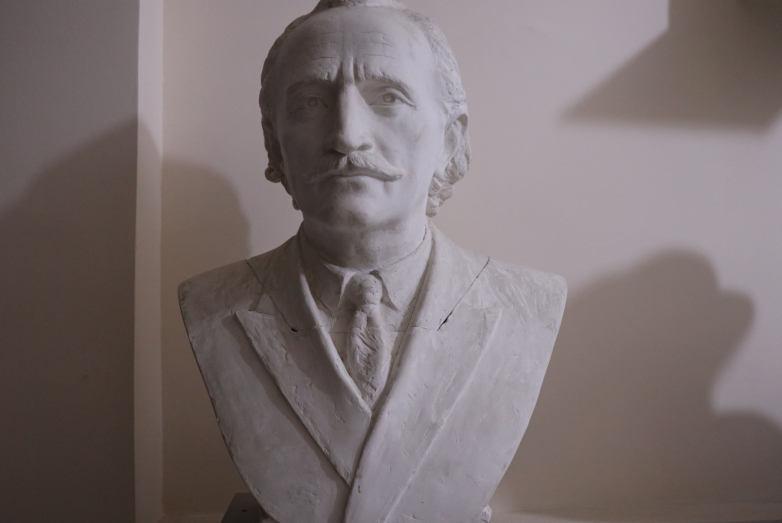

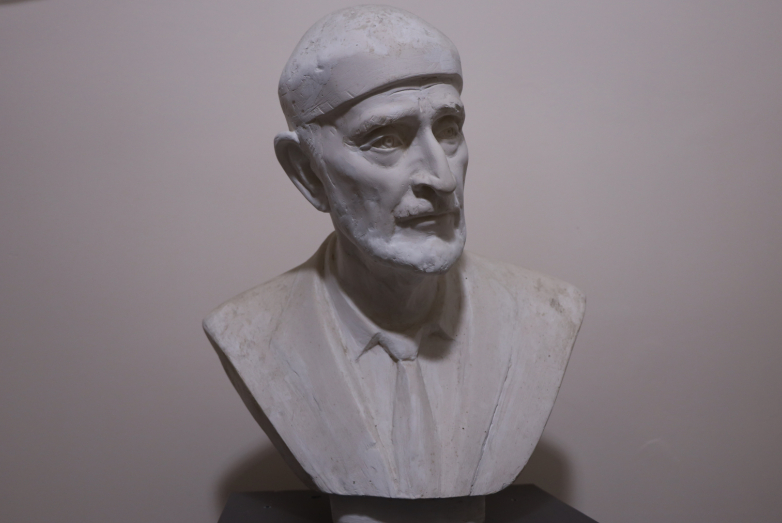
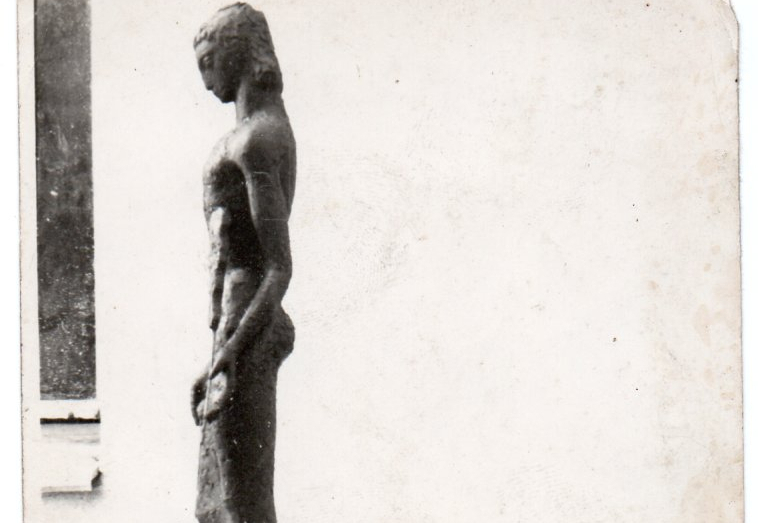
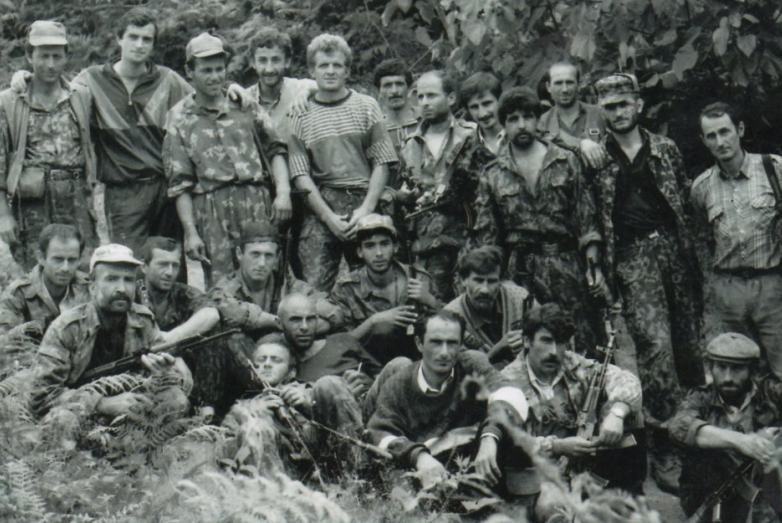
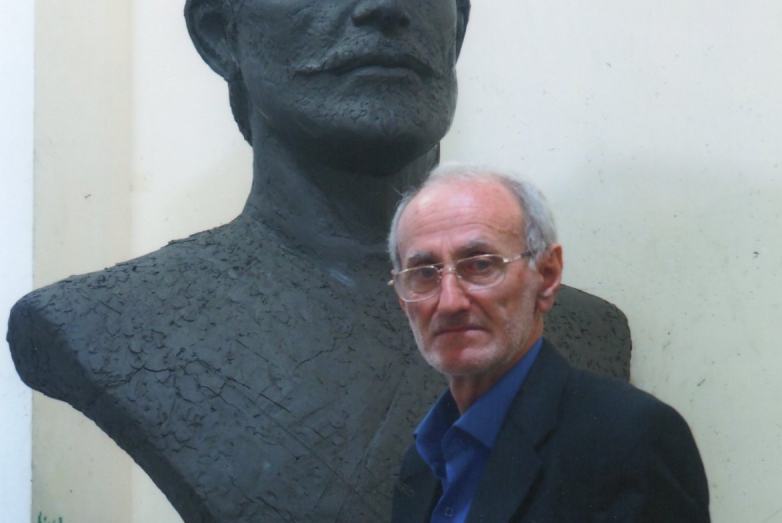
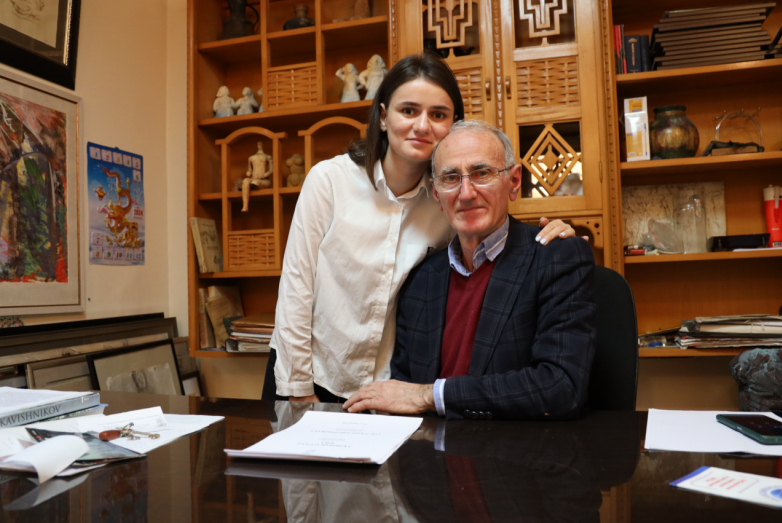
to login or register.